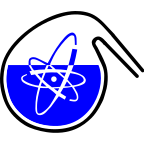Conveners
NAM 1
- Xiaolin Hou (Technical University of Denmark, Center for Nuclear Technologies)
- Jan Kučera (Nuclear Physics Institute of CAS, Řež near Prague, Czech Republic)
In-beam activation analysis, i.e. the combination of prompt gamma activation analysis (PGAA) using neutron beams from research reactors combined with neutron activation analysis (NAA), can in principle be performed at many neutron centers all over the world. Thanks to its strong beam flux (max. 6E10 cm^-2 s^-1), at Heinz Maier-Leibnitz Zentrum (MLZ), Garching, Germany it has been successfully...
Prompt gamma-ray activation analysis has long been used for nondestructive elemental analysis, particularly of the light elements (e.g. H, C, N, S, P, Cl). However, the accuracy and precision of the method for elemental determination of hydrogenous materials is limited by the calibration of elemental sensitivities (cps/mg element), which vary with both neutron scattering power (i.e. hydrogen...
The low-destructive nature of many neutron-based analytical techniques is a main argument for their application in archaeometry. Further advantages of these methods are the little sensitivity for the matrix composition, easy sample preparation and fairly low detection limits. A combination of two or more of these methods broadens the application possibilities. For instance, prompt gamma...
A method for the simultaneous preconcentration of six environmentally relevant transition metals, namely cadmium, cobalt, copper, manganese and zinc, by cloud point extraction followed by their determination using neutron activation analysis (NAA) was developed. The method involved the use of a nonionic surfactant, namely PONPE-7.5, and the chelating agent 1-(2-pyridylazo)-2-naphthol commonly...
Quaternary aeolian sediments, particularly loess–paleosol sequences constitute some of the longest and most detailed records of Quaternary climatic change and valuable data archives for paleoenvironmental reconstructions. In the Chinese Loess Plateau in north-central China, the loess horizons represent arid periods of increased influx of wind-blown dust when the dust-transporting winter...

